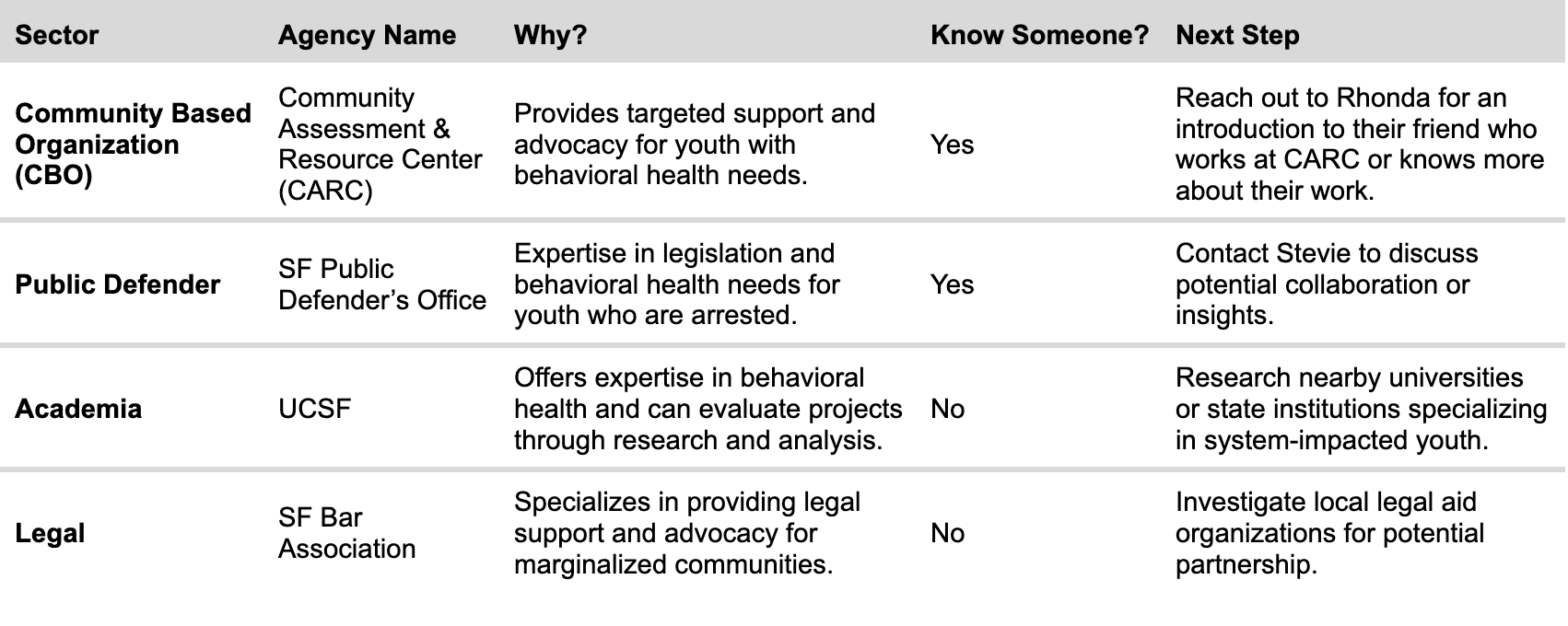Recruiting champions that serve and/or surveil system-impacted youth who already work across agencies (or are interested in doing so) to join your collaborative is a crucial step. These champions can include judges, juvenile probation officers, community organization leaders, educators, etc. Beyond work experience, some examples of champions who should be considered for recruitment include:
- Senior leaders advocating for growth and change within their organization
- Frontline staff who influence peers and leaders within their agency
- Staff with established collaborative relationships with outside agencies (e.g., providers) or institutions (e.g., the juvenile court)
Why these voices?
The champions who joined the SF Tech Collab were committed to improving behavioral health for system-impacted youth and families and showed interest in exploring how technology can be leveraged for that purpose.
Each jurisdiction will have unique needs, strengths, and resources, so each collaborative will have a unique set of champions to recruit.
Identifying the right champions is crucial for building an effective collaborative.
When selecting potential champions, it’s essential to choose individuals who are proactive in seeking solutions to improve youth care access and are interested in leveraging technology for this goal. Emphasis on these components will foster successful cross-agency collaboration.
Selecting collaborative leaders
Selecting champions who could lead the collaborative will help focus the work by identifying and prioritizing collective goals. Importantly, choosing the right leader(s) can facilitate the involvement of additional agencies, as leadership often comes with built-in credibility and connections. Effective leaders can leverage their networks or cultivate new relationships to recruit champions to the Tech Collab.
For example, Judge Monica Wiley, a respected figure in the San Francisco juvenile legal and child welfare systems, played a key role in attracting champions to the SF Tech Collab. Her collaboration with Dr. Marina Tolou-Shams improved mental health access for fostering youth exemplifies how strong networks can drive initiatives forward.
Tips to identifying and recruiting leaders
Collaboration can arise from existing relationships or through new introductions based on shared interests, clients, and/or goals; it can also lead to identifying potential leaders. Individuals with credibility and prior experience in cross-sector collaborations are especially valuable in this process. Next, we provide some ways that leaders from various sectors can support your collaborative’s work:
Refer to our additional resources tab for the Step 1: Identifying Champtions worksheet and an email template for reaching out.
Identifying leaders and gaining champion buy-in are just the first step in building a collaborative. Please continue to the next lesson to review ways to organize the collaborative’s procedures and workflows.
-
-
Champions: Staff employed by agencies or institutions who emerge as natural leaders and/or are intimately familiar with the inner workings of their employer and “how the system works.”
SF Tech Collab: The San Francisco Youth Justice and Family Well-Being Technology Collaborative
System-impacted youth and families: Youth (and their families) who have had contact with the juvenile legal and/or child welfare system(s) and experienced a change in their life as a result of system contact.



